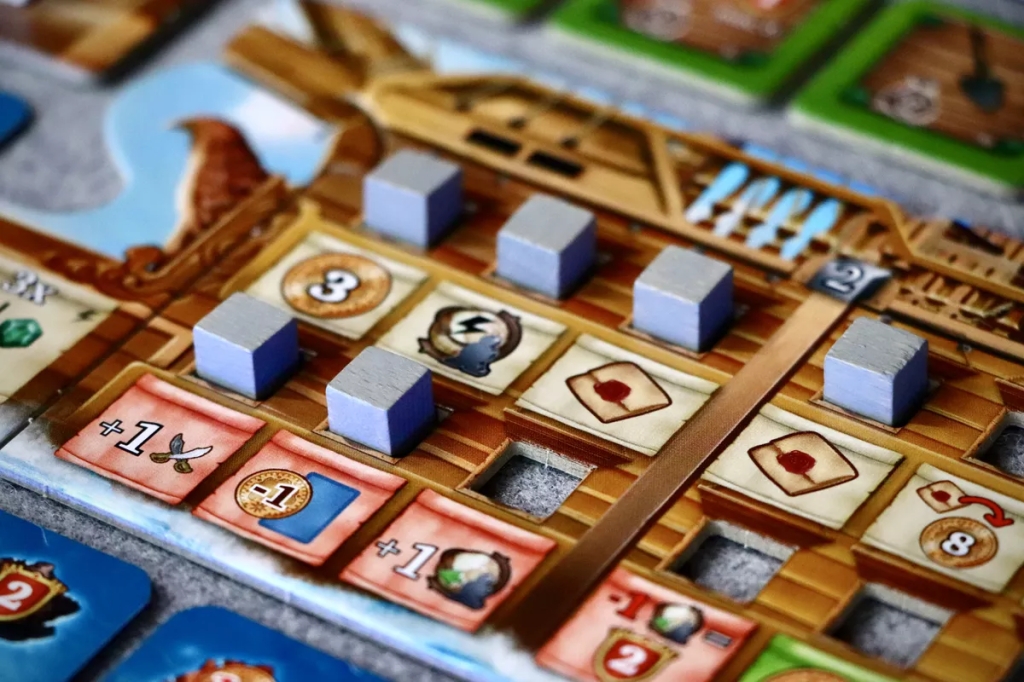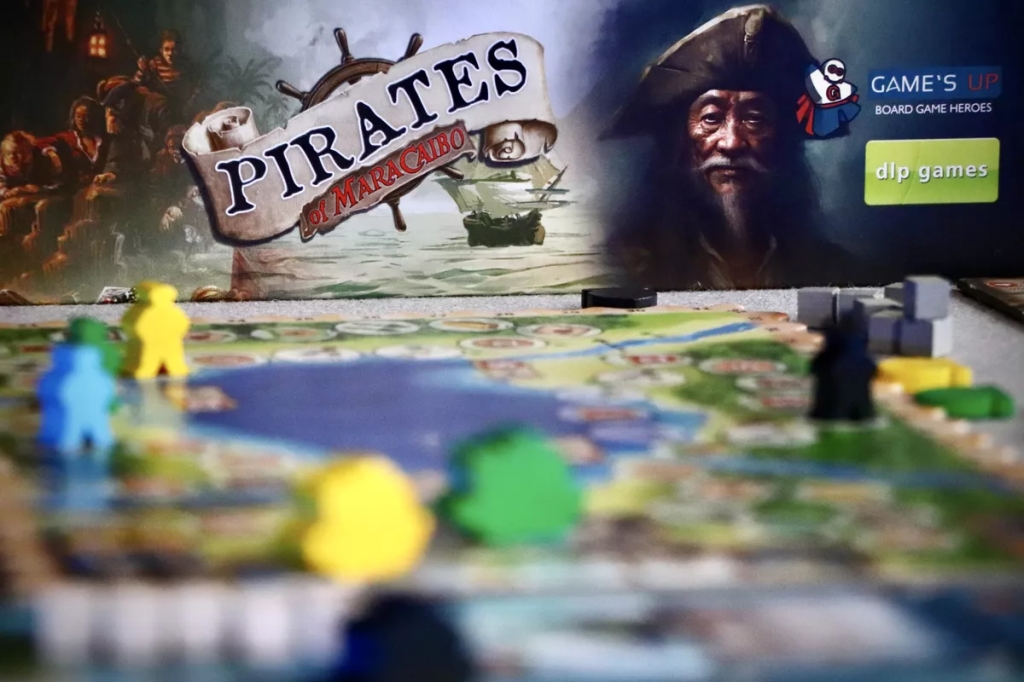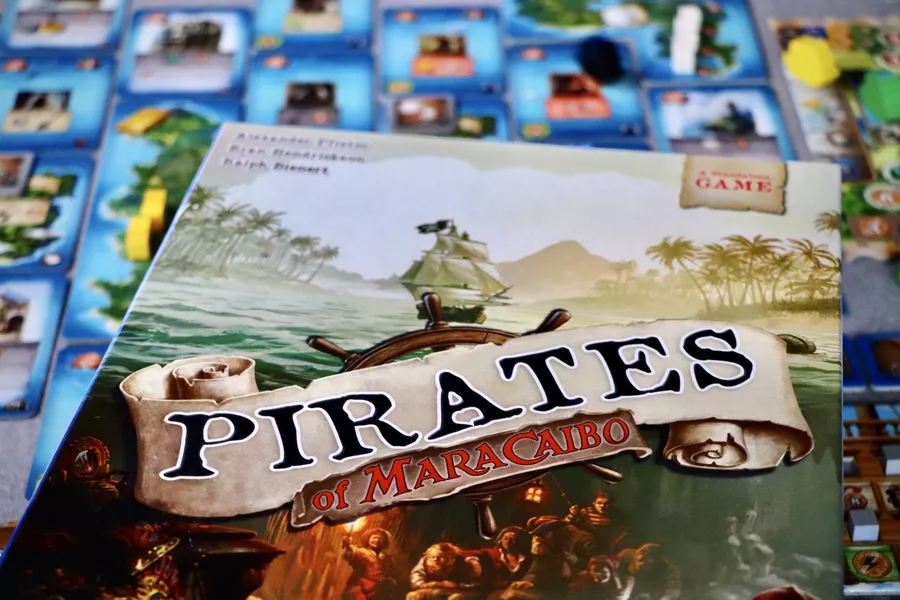Pirates of Maracaibo is a standalone game set in the same universe as Alexander Pfister’s famous Maracaibo. The game invites players to the 17th-century Caribbean, a time marked by lucrative trade and fierce naval conflicts. This setting forms the basis of a game in which players take on the roles of pirate captains, navigating challenges and opportunities in pursuit of wealth and notoriety.
👥 1-4 players, ages 12+
⌛ Playing time: 25 min/player
📝 Designers: Ralph Bienert, Ryan Hendrickson & Alexander Pfister
🎨 Artwork: Christian Fiore, Fiore GmbH & Odysseas Stamoglou
🏢 Publisher: dlp games (review copy provided)
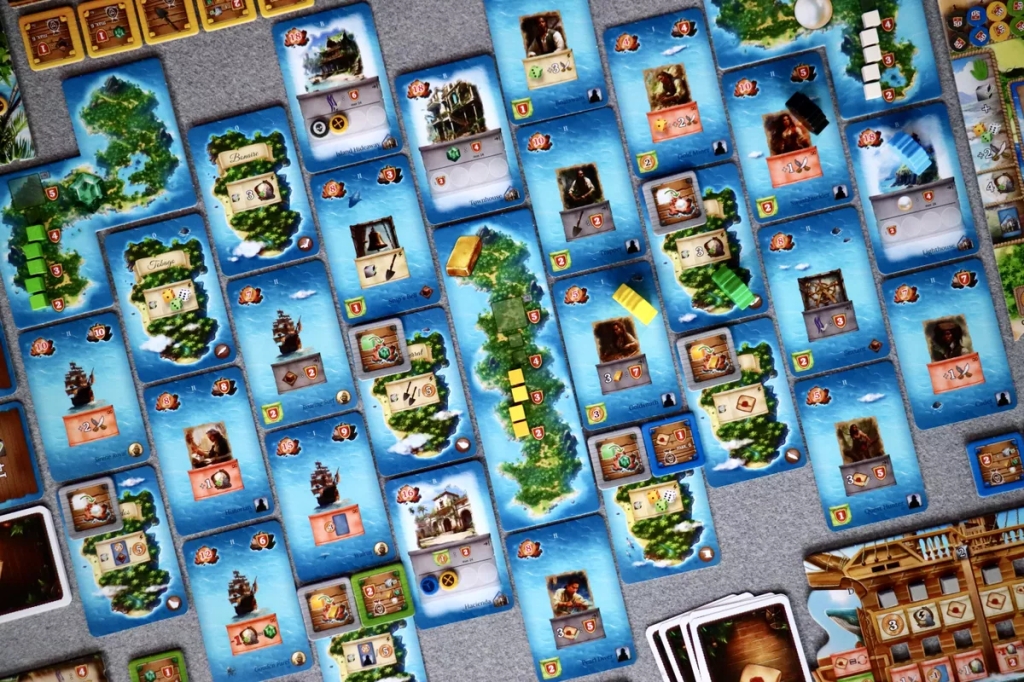
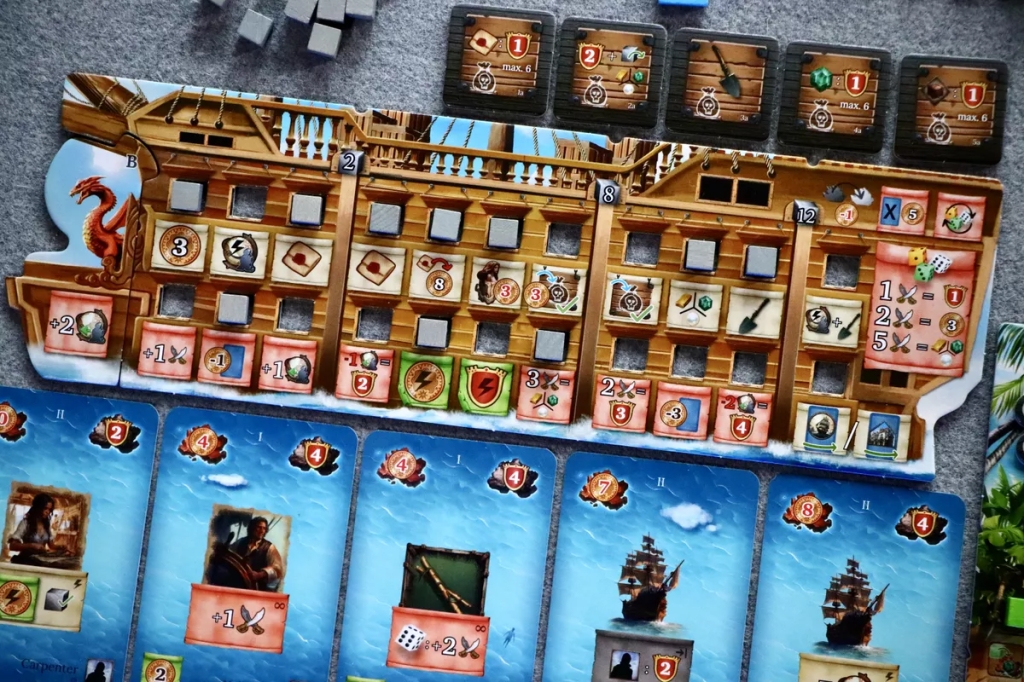
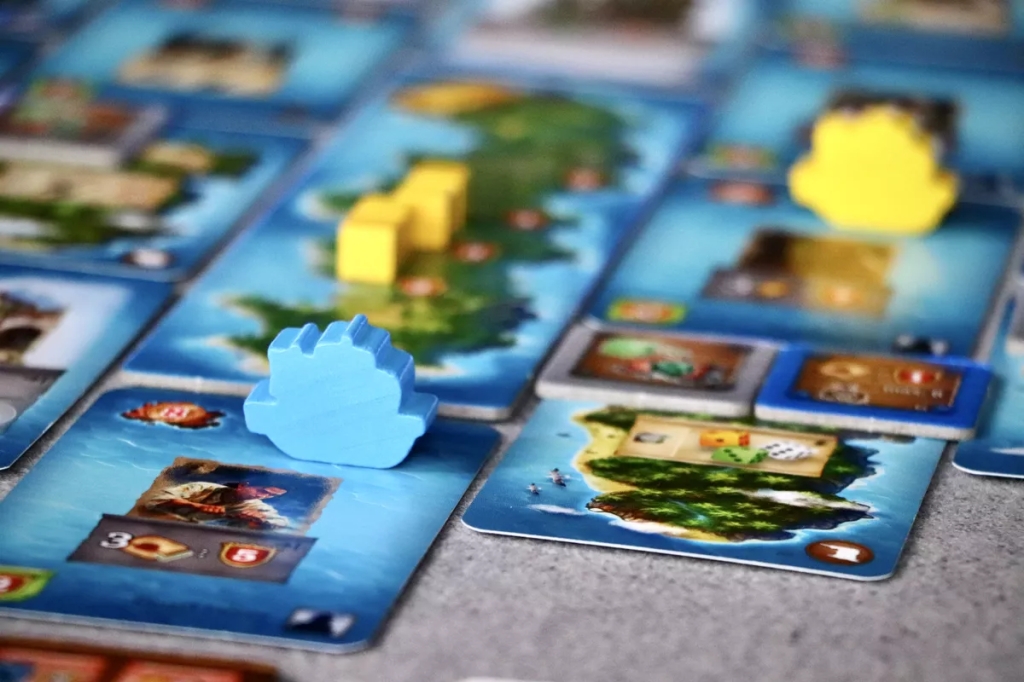
The game is played over three rounds, in which each turn consists of two phases: moving their ship and doing actions.
🚢 Move Step: Players move their ship token 1 to 3 spaces. Movement is restricted to adjacent spaces and towards Maracaibo, avoiding Treasure Islands, which are not considered spaces for movement.
🏴☠️ Actions Step: After moving, players can take actions based on the type of space they land on. These actions vary depending on the location – Improvement, Residence, and Location Cards, the Gulf, and Maracaibo.
💰 Improvement Card: Players can choose to gain doubloons or acquire improvements for future benefits.
🏠 Residence Card: Here, you can build residences, which helps your endgame scoring.
📍 Location Card: Offers a variety of specific actions such as increasing treasure value, upgrading ships, raiding and burying treasures.
🌊 The Gulf: A gateway for ship upgrades and strategic choices, such as enhanced raiding or exploring actions.
🏁 Maracaibo: The last stop of each round, offering points and an upgrade, and signals the end of the round.
🏆 At the end of each round, players earn income in doubloons and points. After three rounds, the game ends, and a final scoring phase occurs. Here, players determine the winner based on their achievements in exploration, collected improvements and residences, treasures, completed quests, and remaining currency.
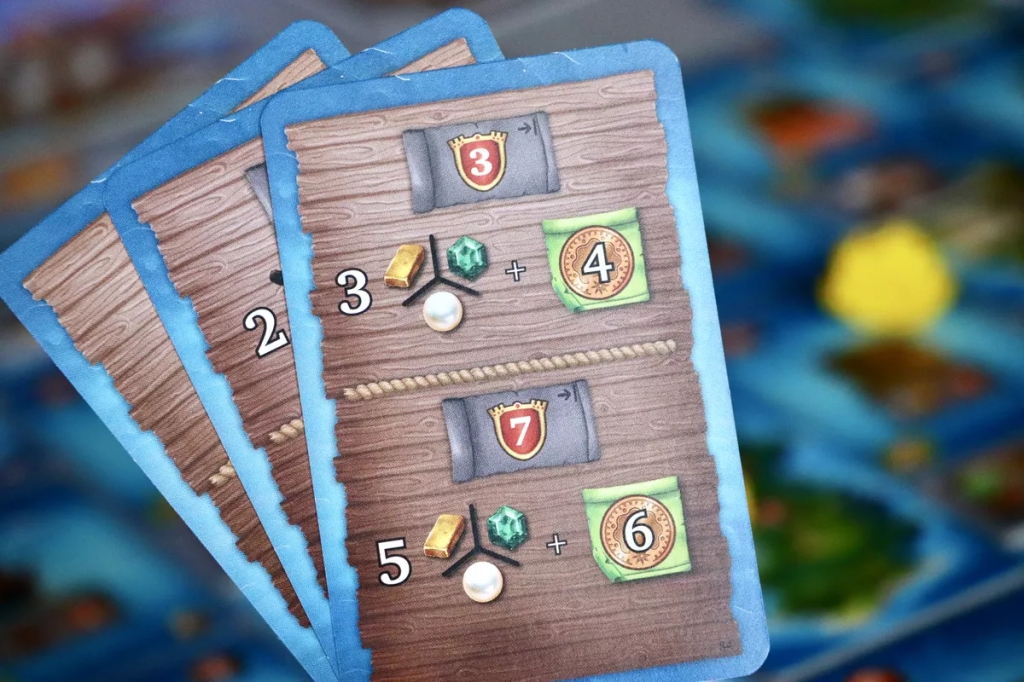
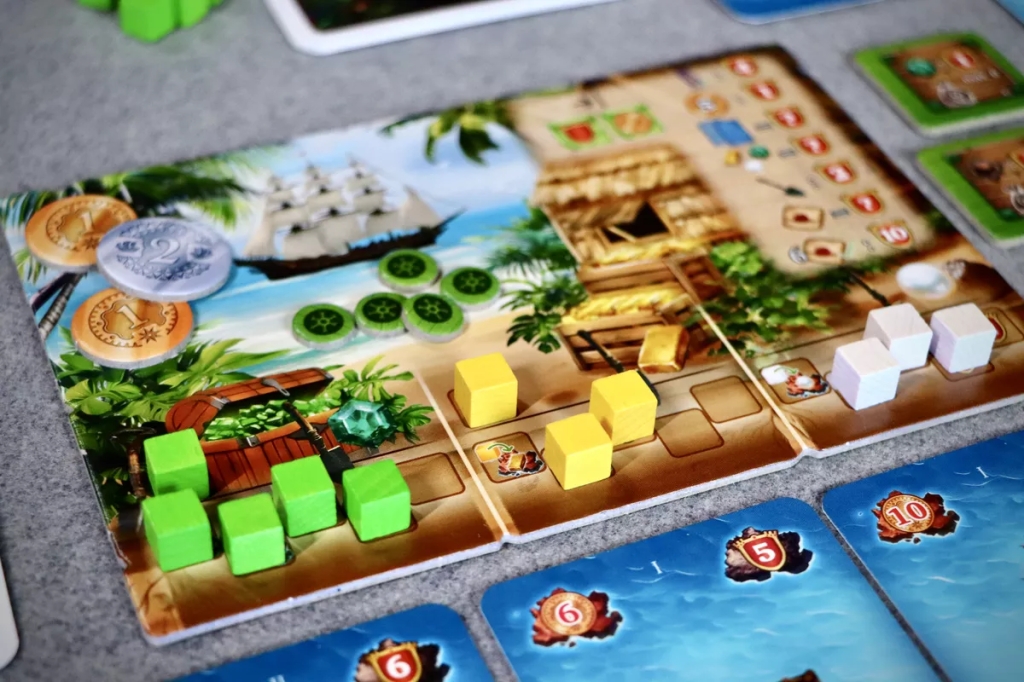
Pirates of Maracaibo, published by dlp games and designed by Ralph Bienert, Ryan Hendrickson, and Alexander Pfister, delivers an original and enthralling experience for board gamers. While it shares the same universe as Pfister’s renowned Maracaibo, prior experience with the original game isn’t necessary to dive into this one. Players familiar with Maracaibo will find some gameplay aspects and the visual style comfortably familiar, though.
📘 The rulebook is clear and well-organized, packed with illustrations and examples that make learning the game a breeze. Despite the depth and breadth of gameplay, the rules are surprisingly compact. Initially, the game might seem daunting with its array of actions, but the clear iconography quickly clarifies everything once you start playing. Suitable for 1 to 4 players, the game maintains a brisk pace. Our 3 and 4-player games wrapped up in just 60-80 minutes – aligning perfectly with the 25 minutes per player estimated on the box. The recommended age of 12+ feels just right for the complexity and themes involved.
🧩 In terms of components, the quality is decent but not extraordinary. True to the German eurogame style, it features solid wooden components and sturdy cards. However, the small player point/residence tokens can be fiddly and easy to lose. The artwork, while fitting the pirate theme, doesn’t particularly stand out and feels somewhat generic. The box, lacking an insert and slightly oversized, might leave some room for custom storage solutions, especially with potential future expansions in mind.
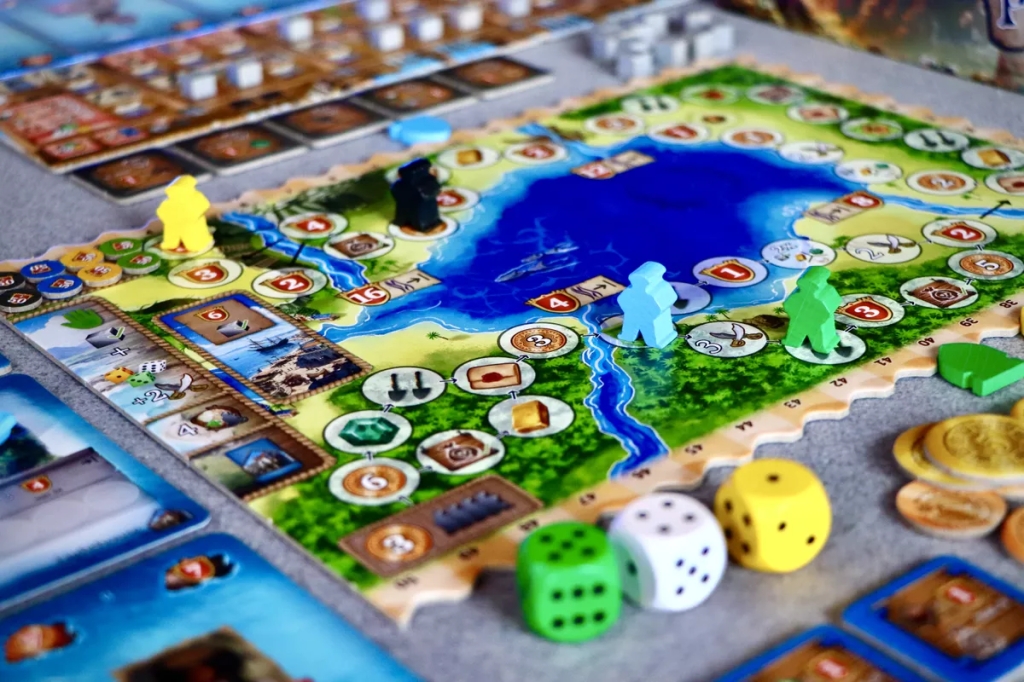
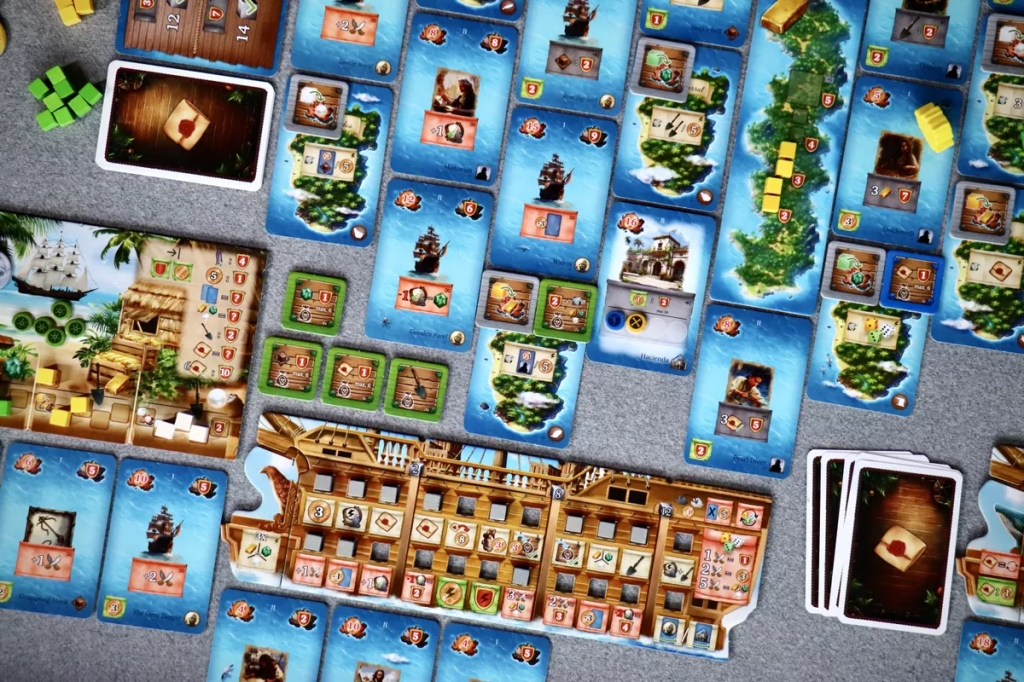
🔄 What we like the most about Pirates of Maracaibo is its replayability. The game remains fresh with varying location, residence, improvement, and quest cards appearing in each play. With an alternative card layout for setup and six different game modules, including solo rules, the game continually offers new challenges and strategies.
🚢 Speaking of strategies, Pirates of Maracaibo provides multiple opportunities for tactical play. Whether focusing on building types, pursuing quests, or maximizing treasure value, players can explore diverse approaches to scoring. The final scoring phase opens different paths to victory, keeping the endgame thrilling and unpredictable.
⚔️ Luck plays a minimal role, primarily in the raiding action where dice are involved. However, various cards, upgrades, and abilities can significantly influence raiding outcomes. Player interaction is mostly indirect, with players vying for points, treasure values, and items in a competitive yet subtle manner. This creates a dynamic game environment where choices are crucial, and risk-taking is rewarded.
🏴☠️ Compared to Maracaibo, Pirates of Maracaibo feels more streamlined and offers greater variability and replayability. It enhances familiar elements and introduces new mechanics, and feels like a more refined version of its predecessor.
💭 Pirates of Maracaibo is a highly recommended game that we give a rating of 8/10. We think the game may serve as an ideal gateway into the eurogame genre. And since it offers extensive replayability and diverse strategies for winning, it is an excellent choice for both experienced eurogamers and newcomers to the genre.
📝 Disclaimer: We received a review copy of Pirates of Maracaibo from dlp games for this review.
